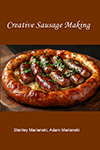Meats and Sausages
Teewurst Rugenwalder Art (Teewurst Rugenwalder Style)
Teewurst Rugenwalder is a German spreadable raw sausage. Quote from Wikipedia: Up to 1945, the sausage industry in Rügenwalde was well established, and Teewurst was its best-known product. In 1927, the term Rügenwalder Teewurst was declared a Protected Designation of Origin. After World War II, sausage makers from Rügenwalde fled or were expelled to the Federal Republic of Germany, where they established new companies and resumed the production of Teewurst. They established an association of former Rügenwald sausage makers, which registered the trademark Rügenwalder Teewurst in 1957. Teewurst was also made in East Germany, but the brand Rügenwalder Teewurst was never used there. Today, only companies that once had their headquarters in Rügenwalde are allowed to use the term Rügenwalder Teewurst. All others use the terms Teewurst or Rügenwalde-style Teewurst.
| Meats | Metric | US |
|---|---|---|
| Pork butt (upper shoulder) | 300 g | 0.66 lb |
| Pork belly or back fat | 400 g | 0.88 lb |
| Lean beef | 300 g | 0.66 lb |
Ingredients per 1000g (1 kg) of meat
| Salt | 22 g | 3.5 tsp |
| Cure #1 | 2.5 g | 1/2 tsp |
| Pepper | 3.0 g | 1.5 tsp |
| Paprika, sweet | 1.0 g | 1/2 tsp |
| Cardamom | 0.3 g | 1/8 tsp |
| Ginger | 0.5 g | 1/4 tsp |
| Rum | 5 ml | 1 tsp |
Instructions
- Cold smoke pork belly or back fat at 18º C (64º F) for 8 hours, then cool well in refrigerator.
- Grind all meats and smoked fat through 3 mm (1/8") plate. Cool in refrigerator and grind again OR emulsify in food processor adding all ingredients.
- Mix ground meats with all ingredients (if not done previously).
- Stuff into 40 mm natural or artificial permeable casings.
- Hold at 18º C (64º F), 75% humidity for 24-48 hours.
- Cold smoke at 18º C (64º F) for 12 hours.
- Refrigerate.


















